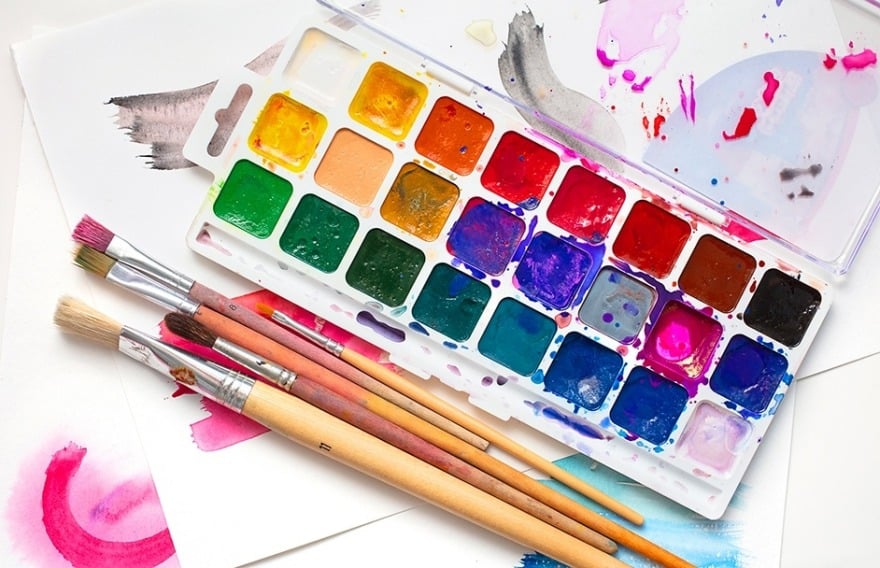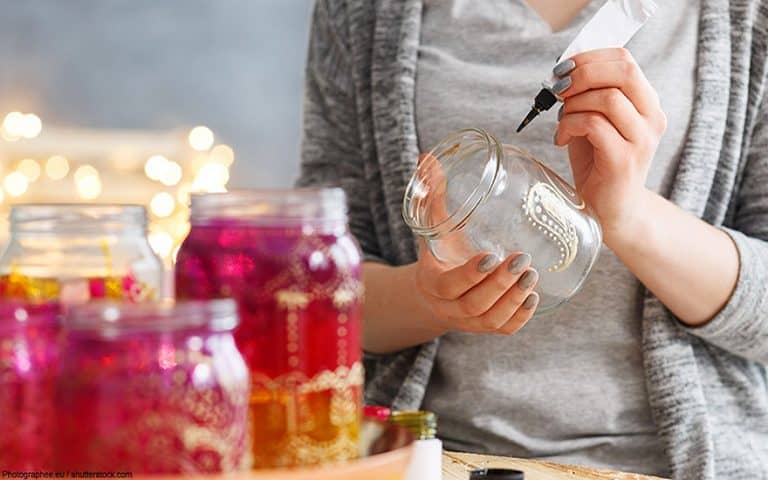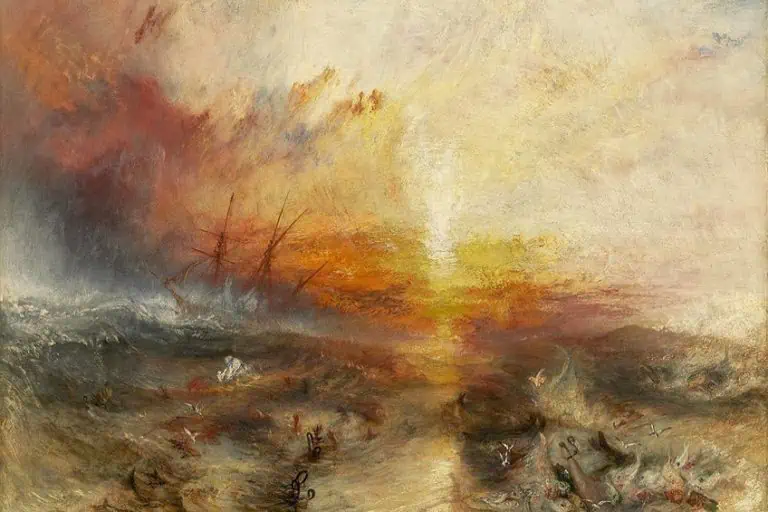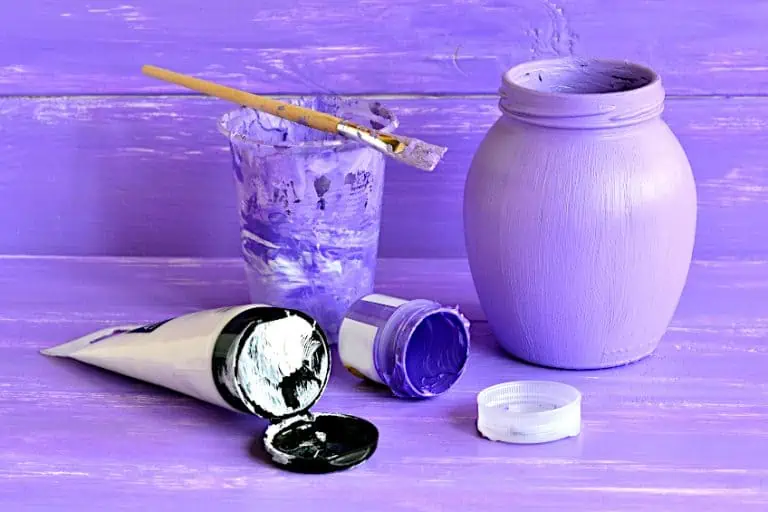Best Watercolor Paints – Find your Optimal Watercolors
This post may contain affiliate links. We may earn a small commission from purchases made through them, at no additional cost to you.
Are you a seasoned watercolor artist or just beginning to experiment with this amazing medium? Whatever the case there is one common question, ‘Which watercolor brands to choose and what are the best watercolor paints available?’ Also, there may be a few things to look out for when choosing the best watercolor set. To answer these questions and more, keep reading to find out about the best watercolor paints for professionals and beginners.
Table of Contents
What Is Watercolor Paint?
To make the best choices when it comes to watercolor paints, it is always a good idea to have some knowledge on the subject. You will then be able to distinguish between the good and the bad and, in the end, create better art pieces and save money in the long run. Watercolor paint is a wonderful and simple art medium. Typically, watercolor paint is made from a few simple ingredients, but there are two main ones. You have your color pigment, which has been added to a water-soluble binder. When water is added, the paint liquefies, and the pigment can then be used to paint with.

The Color Pigments in Watercolor Paint Sets
The pigment is ground to a fine powder and can be natural or synthetic. You can get 100 or more different color pigments for watercolor paints. Some natural pigments are rare, which is why they can be a bit more expensive. The quality and grade of your pigments can result in different quantities being available. The difference in pigment quality is reflected in the quality of watercolor paint sets that you can buy. Artist quality paint sets are the most expensive because they are made with the highest quality natural pigments.
Student grade watercolor paint sets tend to substitute cheaper synthetic pigments for the more pricey ones which is why they are often much more affordable
The Binder in Watercolor Paint Sets
This is either a synthetic glycol or generally, it is natural gum Arabic. The binder keeps the color pigment in suspension and also helps to adhere the pigment to the surface you are painting on. The binder is also responsible for producing a much brighter color by holding the pigments together in a very transparent substance. Both synthetic and gum arabic binders will dry pretty quickly, but gum arabic will dry with the pigment to form a hard block. It is for this reason that most watercolor paints will include a plasticizer and moisturizer, as these will help to soften your paints, making them easier to dissolve and longer-lasting.
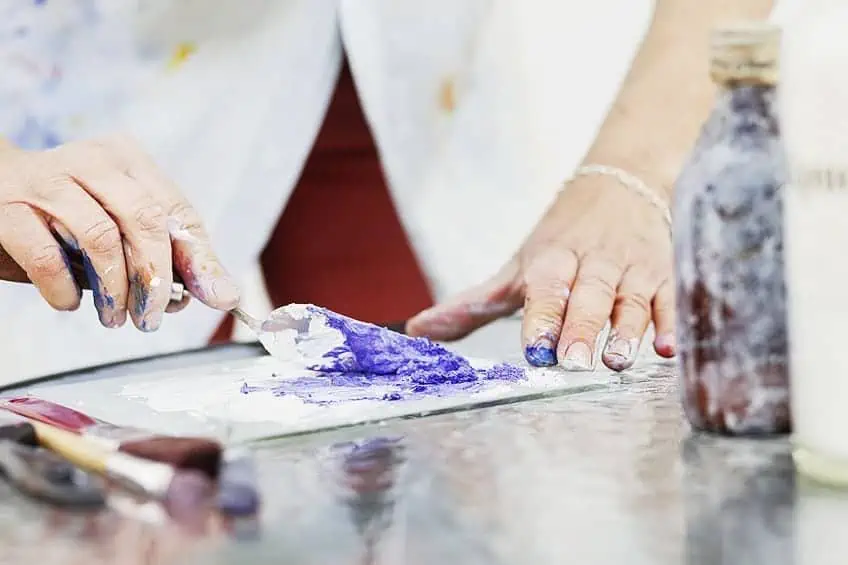
Besides these two main ingredients, watercolor paints can also have certain solvents, filler, or additives included. These are added to modify the paint features, for example, to increase paint durability, to change the viscosity, add brightness, and more. Brighteners are white or transparent crystals that can be added to your watercolor paints to make the pigment appear brighter. Other added fillers can also be added to your watercolors to improve the texture of your paints and make their consistency easier to handle.
When it comes to watercolor painting, it can be difficult to get things right the first time or many times after that.
The fluid character of watercolor paints needs experience and practice to get right. Many times, while painting with watercolors they produce some surprising results, which makes it an interesting and fun medium to work with. Below are a few pros and cons bear in mind when purchasing your watercolors.
Pros
- Easy to work with
- No unpleasant odor
- Dry quickly to avoid smudges
- Can be used to create versatile effects
- Easy to transport
- Easy to clean up with water
- Unused paint can easily be salvaged
- The best medium for certain subjects, like water
- Readily available
- Relatively more affordable than other mediums
- Available in a wide range of vibrant colors
Cons
- Cannot be used on all surfaces
- Paper requires proper preparation
- Not as lightfast as other mediums
- The paint can be tricky to handle and will take practice
- Making alterations is not easy
Things to Look for in Your Watercolor Paint Set
Before we suggest our top artist-quality paint sets, let us take a look at some of the things you should look for in watercolor paint sets. You need to decide whether you want student or artist quality paints, choose between pans or tubes, the cost of your set, the durability of your pigments, and whether you want your watercolor paint set to be staining or not.
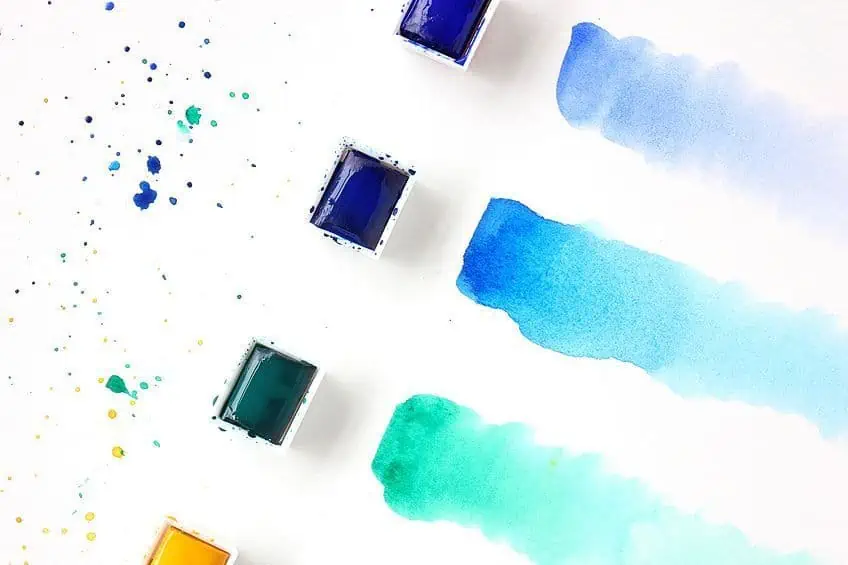
Professional or Student Grade Paints
You might notice that professional watercolor paints are more expensive than others. This is because the manufacturers use high-quality pigments in their formulas. The pigments are where the high costs lie, so to create student Grad Paints that are less expensive, the expensive pigments are exchanged for lower-cost alternatives, or the paint contains less pigment.
If you are a student or beginner, there is nothing wrong with using cheaper paints.
However, you can still purchase cheaper versions, just make sure you stick to well-known and popular brands. You can easily purchase good affordable brands from Amazon. Once you have gained some experience in watercolor painting, you can then move forward and start using professional paints.
Watercolor Pans or Tubes
The best watercolors come in tubes or you can get them in shallow pans. Pans are small containers or pans that contain dry paint which needs to be wetted. There are two sizes available: half pan and a full pan. However, many would recommend you choose paints that come in tubes. Why? There are quite a few reasons but the chief one is that not all brands provide their paints in pans.
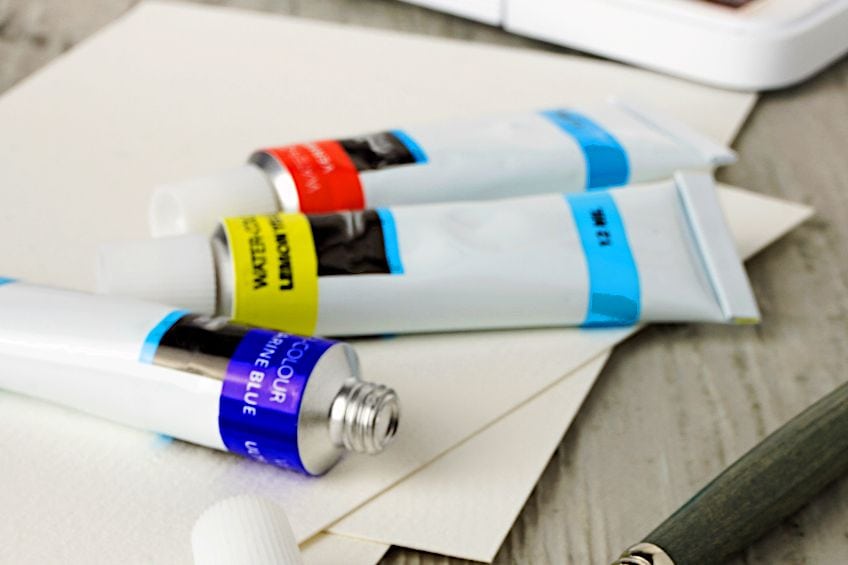
One of the major disadvantages of pans is that they come in color palettes, you get that specific set of paints, and there is no selecting your own colors. To get a better mixing range of colors, it is a good idea to select your own colors. However, watercolors in pans are great for beginners, who are still learning techniques, etc. Paint tubes also provide a more concentrated color out of the tube.
Pros and Cons of Paint Tubes
Here is a summary of the good and bad points about watercolor paint sets that come in tubes of wet paint.
Pros
- Since you can squeeze as much paint as you need, it better covers larger areas
- Excess paint can be reactivated by adding a little water when dry
- Provides immediate color intensity
- Is already moist and in a paste consistency
Cons
- If you forget to replace the cap, the paint will dry inside the tube
- Tubes can crack or break
- If you have a collection of tubes, it might take time to select the right colors
Pros and Cons for Pans
Below you will find a pros and cons list for purchasing artist quality paint sets in pans.
Pros
- The paint is dry and can easily be transported
- Long-lasting
- Easy to store and transport
Cons
- May take time to get the correct workable consistency and color intensity
- If the pans are left in the open, dust can collect on the paint
Pigment Density
Pigments are finely ground colors and span 0.05 up to 0.5 microns. This size is so small it can seep into the paper it is on, where it remains. The pigments also have differing densities, which then affect how they stick to the paper fibers. The various results of these different densities can cause flocculation or granulation (see point 5.7).
Note: Pigment volume is different from density and refers to the number of pigments in the paint.
Staining vs. Non-Staining Watercolor Paints
Staining in watercolors means that after the paint has dried properly, you cannot remove or lift it off the surface without difficulty. When you have a heavy stain, however, the paint is permanent. On the other hand, a light stain is when the paint can be removed but a light color will remain. Some paints stain more than others and two factors contribute to staining:
- How the paint is manufactured
- The type of paper you use
Pigments that stain are those that are smaller and can get into the paper fiber more easily. Since a stain is more difficult to remove, you need to be more aware when using them, as any corrections might prove problematic. However, they also provide vibrant colors. Staining colors are recommended more for techniques such as layering or glazing.

Non-staining color pigments are larger and remain on the paper surface, which makes it easier to remove. These are good for producing different effects, for example, when it is dry, some paint can be removed for a highlighted effect. Therefore, you are still able to work with the paint, even if it dries. Simply reactivate with a little water to move it around.
Lightfastness
This simply means how a particular paint reacts when exposed to light, how long will it take for it to fade or discolor. This is measured according to the American Standard Test Measure and can rate from extremely poor to excellent. These guidelines are to help you if you decide to display your artwork where there is a lot of direct sunlight. You can protect your painting by framing and placing it behind glass.
Unfortunately, eventually, there will always be some fading of colors.
Transparency
You get some watercolor paints that are more transparent than other paints. You can check the rating for transparency, which falls into three categories: opaque, semi-transparent, and transparent. When using transparent paint, it will allow any previous paint layers to still show through, creating a specific color effect.
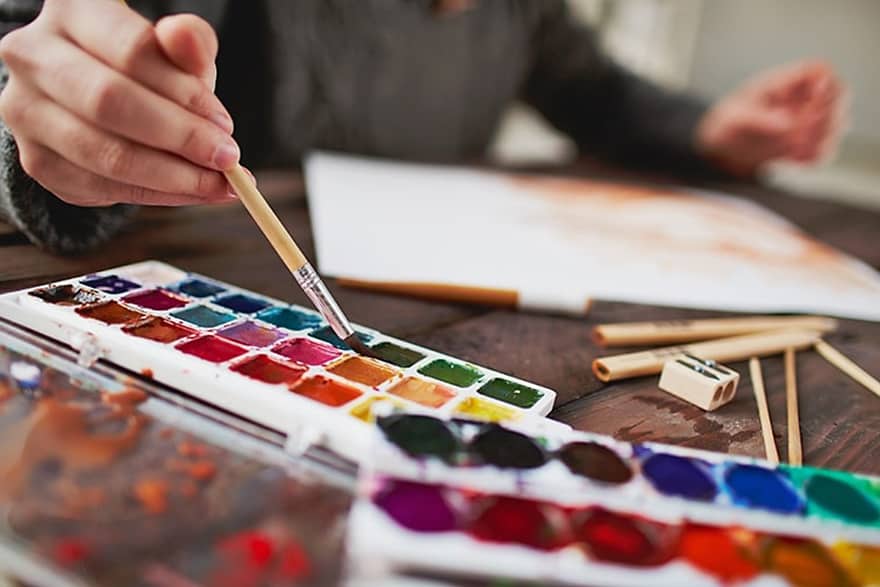
Granularity
Granular pigments are generally bigger and weightier than finer pigments and they tend to be unevenly spread out, which provides a grainy quality to the paper surface. Some prefer smooth colors, but others like to experiment and add amazing textures to their paintings. So, it is a matter of preference. Once you have some experience with the paints, you will learn which paints will granulate. Think about doing some research if you have bought more high-quality paper. Manufacturers have their own formulas, so in certain circumstances, a similar color from two different manufacturers will not react the same.
You will save your money and your time by checking in advance.
Cost
You do usually get what you pay for, the more expensive professional watercolors will make a big difference when compared to the cheaper varieties. Some examples of price comparisons: Student or beginner watercolor paints: We have mentioned the Daler Rowney watercolor set above, which goes for $16.22. Professional Quality watercolors: This watercolor set goes for $87.57. Each of these sets has 12 colors, so there is quite an obvious contrast in price between the two. However, it is all subject to your needs. Are you a beginner on a budget looking to start out with watercolors or are you a professional looking for the best watercolors? Either way, always choose a well-known brand to avoid any really bad choices.

Starting Colors
Color can have an intense effect on those who are viewing it. Colors can set the mood or provoke a certain emotion. Simply gazing at certain colors can calm or excite a person. When painting, you might want to be able to create both vibrant colors and more transparent colors. Therefore, you should have a selection at hand to create various mixing potentials.
To start with, it is a good idea, to begin with, six primary colors, each with a slightly lighter and darker hue.
So, in the end, you will have a set that can produce a wide range of color mixes and a basic color palette. The amount of colors also depends on each artist, some like working with a few colors, while others like more of a variety. As you move forward, you will begin to find out what you like best. After all, painting is some part talent but it is mostly practice. Have fun and experiment with different colors and techniques, this will help you to learn what works and what does not. The entire process should be a fun way of learning and creating.
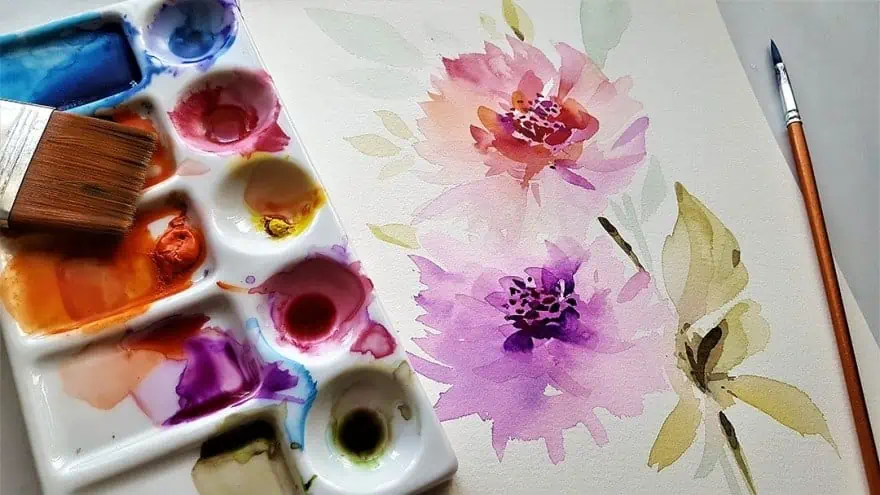
There are many watercolor techniques and things you can learn along the way. Some of these things include learning how to mix the colors, how to build glazes, laying washes, wetting, creating textures and these are only a few techniques you will want to familiarize yourself with. But choosing the best watercolors is a move in the right direction. Do you need help painting with watercolors? Check out our Watercolor Painting Tips article.
Our Top Watercolor Paint Set Recommendations
In this section of the article, we are going to outline some of our best recommendations for watercolors for beginner and professional artists. You can easily check out Amazon to see which watercolors are more popular and to read the reviews before purchasing. Some of the more well-known and best watercolor brands include:
- For Professionals: Schmincke Horadam
- For beginners: Daler Rowney Watercolor Paints
- Top Color Variety: Daniel Smith Watercolor
- Top Traditional: Winsor & Newton Watercolor Box

- Top General: M.Graham Watercolor Tubes
- Top Portable: Sakura Pocket Field Sketch Box
- Top Paints for blending: Sennelier Watercolors
- Top watercolors for kids: Prang Watercolor Paints
Best Watercolor Paint Set for Beginners: DALER ROWNEY Watercolor Set
This best watercolor set is great for students or beginners and comes in 12 paint colors, all in 12 ml tubes. This is an excellent watercolor set if you wish to practice your watercolor techniques, as it is an affordable option when compared to other products. Can be used on all standard watercolor surfaces and each color can be mixed to create an infinite number of color variations. You will also notice, even if these are more on the low-cost side, they still provide vibrant transparent colors. Overall, the Daler Rowney watercolor set is an excellent option when it comes to price and quality.
- Daler-Rowney is renowned as a world leading fine art materials supplier
- Suitable for all conventional art surfaces
- Suitable for students and home use, contains 12x12ml tubes
Pros
- Affordable
- Offers vibrant colors
- Blends easily
- Binds perfectly to watercolor paper
- They mostly rewet nicely
Cons
- May clump and streak
- Some of the watercolor paints may produce a slightly ‘chalky’ appearance
Best Watercolor Paints for Professionals: SCHMINCKE HORADAM Watercolors
These professional watercolor paints come from a German brand that has been creating its own formulas since 1881. Each formula produced makes use of natural ingredients of high quality. This half-pan metal professional watercolor paint comes with 48 amazing highly pigmented colors. When it comes to quality and the best watercolor paints for professionals, then the Schmincke Horadam watercolor set might just be what you are looking for.
- Superior quality, natural ingredients are carefully selected for highest optimization
- Enables to decide as to where the paint should flow moist or stay dry on the paper
- 48 colors included in set
Pros
- Excellent paint quality with finely milled paint that has exceptionally low granulation
- Highly- pigmented watercolors
- Comes in a sturdy yet light tin
- Included is a handy color guide or swatch card
Cons
- Does not come with a brush
Best Price to Performance Ratio: ARTEZA Watercolor Paint
The ARTEZA best watercolor set comes in 12 color tubes, every 12 ml, and these are packed in a storage box. You should be able to produce an amazing painting from the watercolors, as they offer a highly pigmented color. This product is of high-quality quality and it is reasonably priced, perfect for those just starting in the world of watercolors. These watercolor paints are perfect for professional artists, as they are designed and created by artists. The paints are non-toxic which makes them safe for children and adults to use.
- Set of 12 Arteza premium watercolor paint 12 ml tubes
- Dry quickly and are re-usable once dry
- Perfect Starter Kit, ACMI Certified
Pros
- Vibrant colors
- Non-toxic
- Offers detailed labels
- Certified with The Art and Creative Material Institute (ACMI)
Cons
- Dries quickly and may flake once dry
- Not for professional use
The Overall Best Watercolor Set: WINSOR & NEWTON
Winsor and Newton Cotman are considered the best watercolor set and are popular choices amongst artists. The company is recognized for coming up with some beautiful paint shades of high quality. However, costs are made more affordable because a few of the more expensive pigments are replaced by more affordable alternatives. Comes in an easy-to-handle plastic box, which has a mixing palette inside the lid. The watercolor set has 12 Watercolor half pans ranging in colors from Ultramarine, Yellow Ochre to Sap Green and Viridian Hue, and more. The set also has its own pocket brush. Colors mix easily and the paint has excellent color transparency and quality, all at an affordable price.
- Set contains a pocket brush and 12 Cotman watercolors
- Good transparency, tinting strength, and working properties
- The plastic box features a mixing palette in the lid for easy use
Pros
- Has superb tinting strength
- Great transparency
- Easy to work with
- Cost-effective when compared to similar products
- Pocket-size box
- Comes with its own pocket brush
Cons
- Does not contain black color, cannot make grey shades
- Small size
Choosing the Perfect Paintbrush for Watercolor
To create a quality watercolor piece, you not only have to have good watercolor paints, but you need to choose the correct brush. Start off by taking note of the kind of brush it is, is it natural or synthetic? In all circumstances, a natural brush is always better than a synthetic one. Cost may also be a factor, so if you are only starting out and can only afford one brush, try to get a brush that is natural and round.
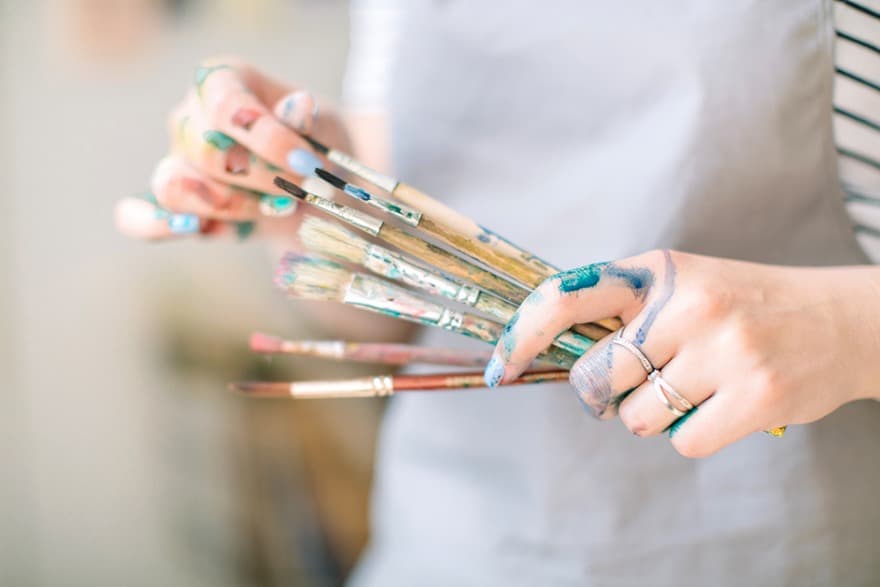
Otherwise, go for one small and one medium natural brush. To start with these are fine, you can always get more once you have more experience. A single brush is all you really need to create your watercolor art piece. When it comes to a paintbrush for watercolors, you need to look at three things:
- The size of the brush
- Brush shape
- Type of brush hair
Watercolor Brush Sizes
If you are only just starting out with watercolor painting, then it is a good idea to have a range of different sizes. You do not, however, need every single watercolor paint brush available. Brush sizes range from 0000 to 50, and while these may differ from brand to brand, they tend to be fairly similar. We typically recommend having one large brush for bold strokes and washes where you want to cover a large area with paint. Smaller brushes are perfect for creating fine detailed lines and shapes. We recommend getting a set of round brushes, and the most common sizes are a small size 3, a medium size 6, and a large size 12.
This set of brushes will be enough for all beginners.
Watercolor Brush Shapes
There are many different shaped watercolor brushes available for both beginner and professional artists. Each different brush shape is best suited to different painting techniques. It is best to think of each watercolor brush shape as a similar to different kitchen utensils, each has a particular use for unique styles.
- Round Brush: This is an extremely versatile brush; it can be used for finer details and larger washes. You make the changes by simply changing the applied pressure and angle of the brush.
- Oval Wash: Similar in shape to a make-up brush, it is used for swiftly creating larger washes and wetting the paper.
- Flat Brush: These can embrace a few colors and the edges can be used to make sharp lines. It can also cover larger areas.
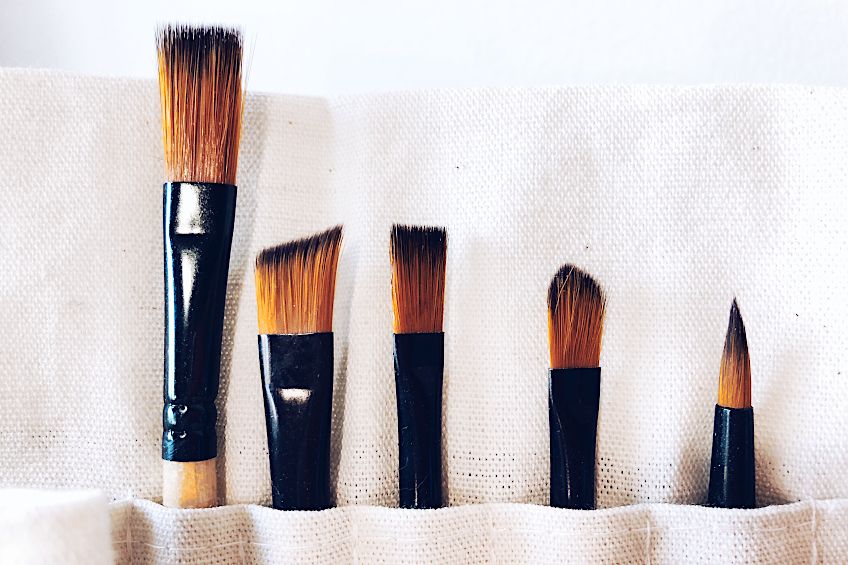
- Mop Brush: These quickly paint large areas and also for wetting paper.
- Square Wash Brush: Shorter than the flat brush, it works for washes and wetting the paper.
- Angular Brush: Brush hairs form an angle and this type of brush is used for more exact strokes.
- Liner or Script Brush: Perfect for finer details, the brush forms a point and is quite narrow.
Each painter has their own unique style, so the brush shapes you choose really depends on the types of strokes that you want to create. Your options are round brushes, flat brushes, angleded brushes, and small spotter brushes. For beginners wo are still figuring out their styles, we recommend sticking with round brushes, as they are the most versatile. Round brushes can be used to create fine details, lines, and washes.
Watercolor Brush Hair Options
The type of hair used in your watercolor brushes is probably the aspect of the brush that is the most cost-dependant. You can buy brushes with a range of natural hairs, or synthetic brushes made from nylon. Natural hair is by far the best option, but it is also the most expensive. Synthetic brushes have fibers that are made from polyester or nylon. Within the natural hair range, there are some hairs that are superior, like sable hair, while others, like camel, are arguably of a lesser quality than synthetic options. Sable brushes are expensive, but they are long-lasting and incredibly high-performing. They hold the water very well and keep their shape and texture for years.
Synthetic brushes are easily able to replicate the structure and performance of many natural hair brushes at a much lower price.
The quality of synthetic brushes will vary from brand to brand, but they are typically suitable for beginner watercolor artists. The nylon fibers hold a point beautifully, but they are not able to hold and distribute the paint as well as the higher-quality natural hair options. Typically, you will need to replace your synthetic brushes every few years, as the fibers can begin to fall out after extended use and the last thing you want is stray fibers floating around on your canvas.
After reading this article, you will know everything that you need to find the best watercolor paint for your painting needs. From what to look for in a watercolor paint set, our top watercolor recommendations, to the best watercolor brush options available. This article contains everything that you need to know for beginner and professional artists alike.
Frequently Asked Questions
Do you use Water with Watercolor Paint?
Yes, watercolor paints would be nothing without the addition of water. When you first start painting with watercolors, you will purchase your watercolor paints in either a tube or pan. To begin painting, you will wet your brush and then mix the water with the paint to lift it into your brush. The amount of water you use will decide the hue and depth of the paint and create the effect you are looking for.
What Is the Best Watercolor Paint for Beginners?
There are many options on the market today and if you are a beginner, it might be a bit daunting. To ensure you choose a good watercolor option to start with, always go for the well-known and popular brands. Consider either the Daler Rowney Watercolor Tubes or the Winsor & Newton Cotman Watercolor Sketchers Pocket Box to start with.
Are Watercolor Paints Washable?
You get two types of watercolor paints, stain, and non-stain or washable. The washable watercolors can be removed from your paper, helping to create certain effects. Also, if you get it onto your clothes, you can wash it out if you follow a few simple steps.
Why Is Watercolor so Expensive?
Watercolor paints are more expensive because they contain more color pigments, and many of these pigments can be quite expensive. Some pigments are more expensive and more difficult to obtain, which also influences the cost, but many manufacturers sometimes also use cheaper color alternatives to bring costs down.
Can you Use Watercolor on Canvas?
Yes, you can use watercolor on canvas if you are preparing the canvas properly. Although canvas is not the most common surface for watercolors, it is more than possible if you do the right preparation. Have a look at our in-depth article on how to use watercolor on canvas if you want to know more about this topic.
Matthew Matthysen is a multidisciplinary artist. He completed his fine art degree, majoring in History of Art and Contemporary Drawing Practice at the University of Witwatersrand, South Africa. Before joining acrylgiessen In 2020, Matthew worked part-time as an art teacher at Reddford Blue Hills High school. Matthew creates drawing and painting tutorials for acrylgiessen and captures them not only photographically and in written form. He also records the creation of his works in his own creative studio as in video format, from which later with a voiceover and a video editor also drawing tutorials for the Youtube channel of acrylgiessen are created.
Learn more about Matthew Matthysen and about acrylgiessen.
